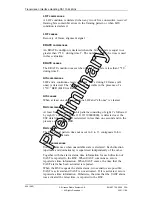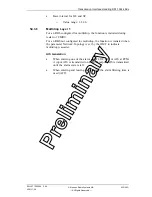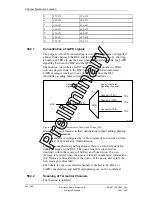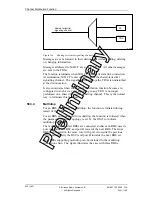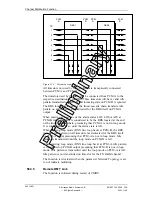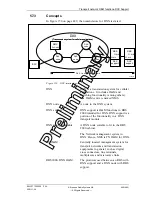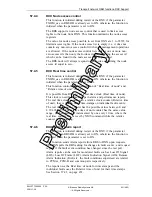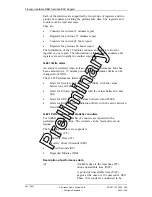
Channel Distribution Function
5
572-575
576-583
6
640-643
644-651
7
652-655
656-663
8
664-667
668-675
9
676-679
680-687
10
688-691
692-699
11
700-703
704-711
56.3.1
Concentration of LAPD signals
The purpose of LAPD concentration is to reduce the number of required
physical links between the BSC and the BTS. This is done by allowing
a number of TRXs to use the same physical transmission link for LAPD
signalling between the BSC and the BTS.
The function concentrates LAPD messages from a number of TRXs
onto one physical link to the BSC (uplink). It also deconcentrates
LAPD messages received on one physical link from the BSC
(downlink), sending them forward to their destinations.
01_0301A
(TEI1, TEI2, ... TEIN)
TRX
BSC
Channel N (TEIN)
TRX
TRX
Channel 2 (TEI2)
Channel 1 (TEI1)
Concentrated
signalling channel
Non-concentrated
signalling channels
CON
Figure 145
One N:1 concentrator Connection Group (CG)
Messages are sent forward to their destinations without adding, deleting
or changing information.
The concentrator is configured by A-bis commands as described within
the context of Functionality Administration.
For each concentrated signalling channel there is a transmit queue for
uplink messages to the BSC. The queue length is supervised as
described within the context of Selftest and Supervision. If a new
message is received when the queue is full, all unnumbered information
(UI) frames are discarded from the queue. If the queue still is full, the
new message is discarded.
The bitrate for the concentrated channels is limited to 64 kbit/s, i.e.
LAPD concentration and LAPD multiplexing can not be combined.
56.3.2
Scanning of Terrestrial Channels
The function is initiated:
440 (485)
EN/LZT 720 0008
P2A
2001-11-28
© Ericsson Radio Systems AB
— All Rights Reserved —
P
re
li
m
in
a
ry
Summary of Contents for RBS 2106
Page 2: ...P r e l i m i n a r y ...



